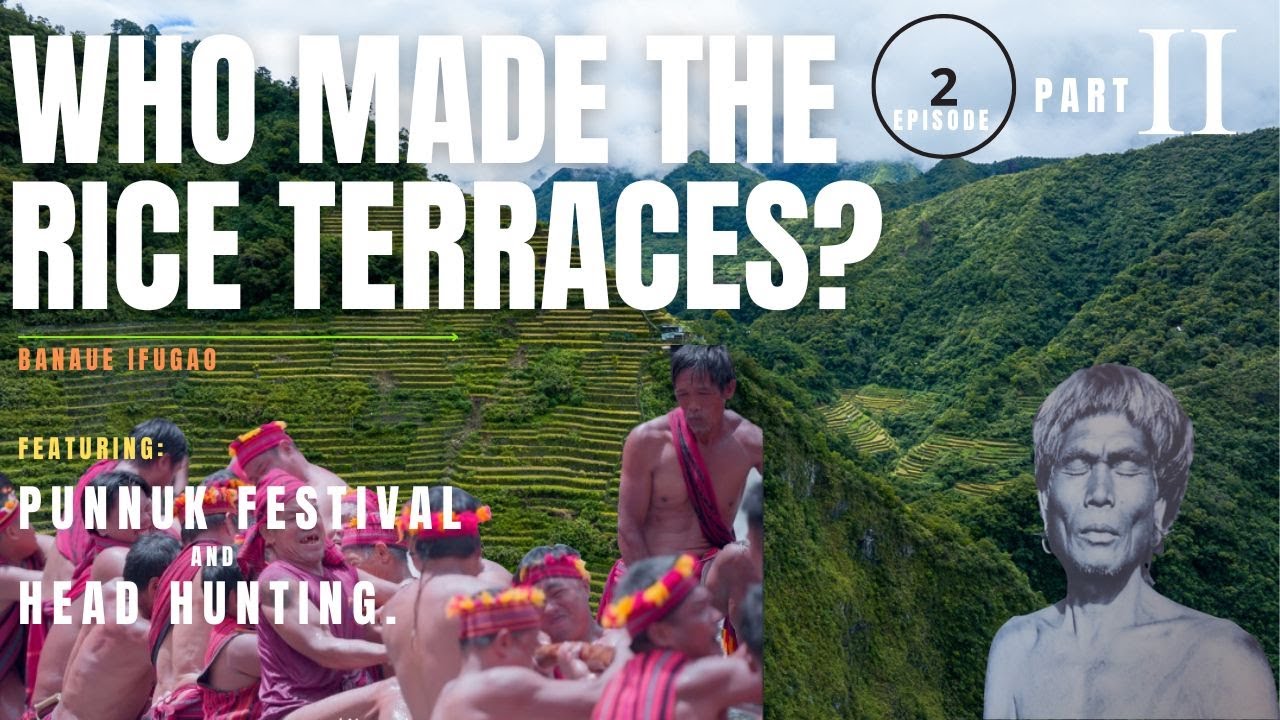SOTR | Second Episode | Who Made The Rice Terraces | Part 1 I
Summary
TLDRThe video script explores the history and significance of the Banaue Rice Terraces in the Philippines. It documents a journey to uncover the origins of these ancient agricultural marvels, interviewing locals and learning about their customs and practices. Despite the lack of concrete historical records, the script captures the community's rich culture and the breathtaking beauty of the terraces, leaving viewers with a sense of wonder and a desire to learn more about this UNESCO World Heritage Site.
Takeaways
- 🎵 The transcript begins with a song that is native to the region, highlighting the cultural significance of music in the community.
- 🌾 The Banaue Rice Terraces are described as a majestic and agriculturally relevant natural wonder, sparking curiosity about their history and construction.
- 🚗 Accessing the terraces is an adventure in itself, with a long and challenging journey through scenic but difficult roads.
- 🌄 The terraces are depicted as a breathtaking sight, with thousands of steps cascading down the mountain, showcasing the harmony between humans and nature.
- 👵🏻 The locals are approached to provide historical insights into the terraces, emphasizing the importance of oral history in preserving cultural heritage.
- 🌾 The process of rice harvesting is described, showcasing the manual labor and skills involved, which are still practiced today.
- 🏞️ The search for elders who can provide historical information about the terraces is a central part of the narrative, indicating the respect for wisdom and tradition.
- 📜 The use of banana leaves as a medium for birth certificates reflects the impermanent nature of record-keeping in the community.
- 🍶 A local shares his story over rice wine, illustrating the social and cultural practices that are part of the community's daily life.
- 🏡 The life in Batad is portrayed as hard and simple, with residents relying on farming and the natural environment for sustenance.
- 🎶 The community's happiness and unity are expressed through song and dance, especially during harvesting times, reflecting the joy found in communal activities.
Q & A
What is the main focus of the episode described in the transcript?
-The main focus of the episode is to uncover the truth behind the history of the Banaue Rice Terraces, exploring their construction and significance to the local community.
What challenges do travelers face when reaching the Banaue Rice Terraces?
-Travelers face an hours-long journey with sharp turns and curves leading to the mountain's highest areas, making the roads challenging.
How does the narrator describe the Banaue Rice Terraces?
-The narrator describes the Banaue Rice Terraces as a mesmerizing site with thousands of emerald green steps cascading down the mountain, which is both inspiring and humbling.
What activity do the locals teach the visitors in the script?
-The locals teach the visitors how to harvest rice manually, which requires skill, precision, and practice.
What does the local Tata share about the history of the Banaue Rice Terraces?
-Tata shares that the history of the Banaue Rice Terraces is not well-documented, as they used banana leaves for birth certificates, which are perishable and impractical for long-term record-keeping.
How does Nan Rona describe her life in Batad?
-Nan Rona describes life in Batad as hard and simple, involving work in the mountains, planting crops, and relying on rice, camote tops, and other vegetables for food.
What is the significance of the song mentioned in the script?
-The song is about a man who goes to the mountain, finds a sweet fruit, and shares it with his parents, friends, and relatives, symbolizing community and sharing.
What does Nan Rona recall about the history of the Banaue Rice Terraces?
-Nan Rona does not know the exact history of the Banaue Rice Terraces, as they were already there when she was born, and her parents did not provide detailed information on their origins.
What story does Ton, another local, share about the origins of the Banaue Rice Terraces?
-Ton shares a story about a hunter named Umar and his dog who chased a deer to the area where the terraces are now. Umar recognized the area's potential for water and rice cultivation, leading to the establishment of the rice terraces.
What is the significance of the buuk festival mentioned in the script?
-The buuk festival is a celebration after the harvest and is related to the history of headhunting in Ifugao. It provides a cultural context to the area's history and traditions.
What question remains unanswered in the script regarding the Banaue Rice Terraces?
-The question of how and when the Ifugao people established the Banaue Rice Terraces remains unanswered, as the locals' accounts are based on stories passed down through generations without concrete historical evidence.
Outlines

Cette section est réservée aux utilisateurs payants. Améliorez votre compte pour accéder à cette section.
Améliorer maintenantMindmap

Cette section est réservée aux utilisateurs payants. Améliorez votre compte pour accéder à cette section.
Améliorer maintenantKeywords

Cette section est réservée aux utilisateurs payants. Améliorez votre compte pour accéder à cette section.
Améliorer maintenantHighlights

Cette section est réservée aux utilisateurs payants. Améliorez votre compte pour accéder à cette section.
Améliorer maintenantTranscripts

Cette section est réservée aux utilisateurs payants. Améliorez votre compte pour accéder à cette section.
Améliorer maintenantVoir Plus de Vidéos Connexes

KASAYSAYAN NG CORDILLERA ADMINISTRATIVE REGION (CAR), LUZON

Uncovering the Filipino heritage trail - life

The History of Science and Technology in the Philippines | Online Class Edition

Pre Colonial Philippines explained in 2 minutes

STS - S&T and Nation Building- Selected indigenous science and technologies in the Philippines

SOTR | Second Episode | Who Made the Rice Terraces | Part II |
5.0 / 5 (0 votes)
